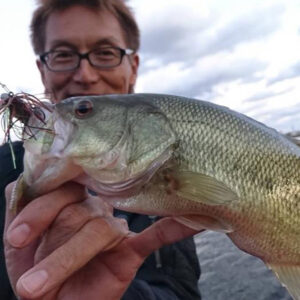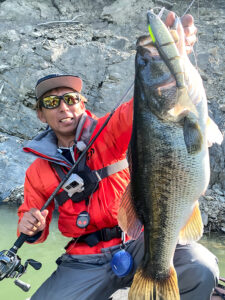Do You Eat Fish? The Relation between the Fishing Population and Fish Eating Preference in Japan
Japanese people love to eat fish. And they like to go fishing. But it is too early to say the reason fishing is popular in Japan is the joy of eating fish.
In the US, angling is a popular leisure activity, but it does not really reflect that they have a strong fish eating culture.
Then the question to ask is: are the fishing population and fish eating related in Japan?
To give some insights for answering this question, this article picks up some data to show the trends of fishing population and fish consumption. And then some information to analyze it, namely the factors to let people go away from fish eating and the trend in fishing.
At the conclusion of this article, you can find that currently more and more Japanese fishermans are enjoying fishing as a game, and it is not necessarily for eating the catch.
Fishing population
In Japan the fishing population is decreasing. The details are explained in my blog article (Statistics on Angling in Japan.)
Below is the graph of transitions of the Japanese fishing population.
In the article, I quoted Nakamura (2015) that the disposable income amount is affecting the fishing population, from his data of the past 3 decades. But I would like to see it in a different way.
To think about the relationship between the preference of fish eating and the fishing population, let us see the transition of fish consumption amount in Japan.
According to the Ministry of Agriculture, Forestry and Fishery, their 2019 survey about reasons for not selecting fish were; family members prefer meat to fish, fish are more expensive than meat, and to prepare fish to eat requires more work than meat. (Survey results are in this page, in Japanese)
These two graphs are sharing the same decreasing trend.
Partly the reasons of this decrease of consumption is occurring from the change of circumstances around cooking fish
Change of circumstances around cooking fish
People are spending less time preparing them than before. In the past, wives were supposed to stay at home and spend their time with the household chores. But now, more and more wives are out working and have less time at home. (For your information, it did not bring Japanese males more time spent at home. So, the total time spent for household chores, of males’ and females’ is shorter.)
With this background, people are trying to spend less time cooking. The graph below is clearly showing that every age group (30’s, 40’s, 50’s and 60’s) prefers to have less and less time for cooking, year by year.
And actually the time for cooking is decreasing.
Another 2021 survey (from this site of a kitchen electronics manufacturer) shows that the average time spent to prepare dinner is 46.4 minutes. When you imagine getting a complete fish, making it into filets and cooking, you can see 45 minutes are not enough to complete the whole dinner dishes (you may want to eat other dishes including carbohydrate foods too.) And the time they spend is decreasing. As you can see in the below graph, 2005 surveyed people (blue bars) spend less time, compared to 1995.
Less people who can prepare fish to eat
At the same time, there are significantly less people who can prepare fish than before. So it is highly likely that the chances to be able to prepare fish has been lowering. According to this survey, the percentage of people who can prepare fish is 21.2%. The percentages by gender are; male 16% - 22.4%, female 16.8% - 30.4% (ranges of 4 age groups.) In the past, to prepare fish was one of the key skills to be a wife, and this skill was taught by the mother.
The above things are very strong forces, even for fishermans, to reduce fish consumption. According to one unconfirmed survey, 70% of those who are interested in fisha (fish knowledge certification participants) can prepare fish by themselves (unconfirmed survey result.) It is highly likely that the fishermans show the same trend. Even with this tendency, the pressure for spending less time cooking affects onto fishermans.
Therefore, though this can be nothing more than a speculation, in total, I assume the fisherman’s fish consumption amount per person is decreasing too.
Additionally, fishing style is changing in favor of weakening the fish eating drive.
Change of fishing styles
The first one is the change of fishing style. Some fishing styles, originated from the game fishing, engage more catch-and-release than others.
In 2020 data from Japan Fishing Tackle Manufacturers Association, the percentage of lure fishing related products sales consists of 62.2% out of total. In this 62.2%, saltwater lure fishing is 36.7%, and the other 25.5% is freshwater. While the catches from saltwater lure fishing tend to be eaten (my assumption is 50% of total catch would be on the table after fished,) fish caught from freshwater lure fishing are much less likely. For the largemouth bass, the biggest portion of Japanese freshwater lure fishing, anglers never eat their catch. For the trout related, I suppose about 30 - 40% of catch would be kept to be eaten.
Since the western style lure fishing and fly fishing was brought into Japan, and spread among Japanese fishermans in around 1980’s, the fish consumption per person among fishermans was becoming less and less, for the change of fishing style.
And as you can see in the graph below, this trend is continuing, while the total number of fishermans is decreasing.
This graph shows the increased percentage from 2017, as 100. Red line is for lure fishing, blue line is fly fishing and black is the figure for other categories of fishing. Originally from the survey of Japan Fishing Tackle Manufacturers Association, image is from this site.
Summary
From the information above, we could see 1) circumstances around preparing or cooking fish are becoming negative and it made people, and even fishermans, get away from fish eating, and 2) among all the fishermans, the game fishing % in total fishing is becoming higher. It raises the possibility of caring out catch-and-release or no eating of fish,
Coming back to the question, we can see the current Japanese fishermans go fishing to enjoy a game against fish, more than ever. In the past, the preference of fish meal might raise the interest of fishing, backed up by the available cooking skills and enough time to prepare fish, but now the situation is different and the relation between fish consumption rate and angling population is not straight forward.

